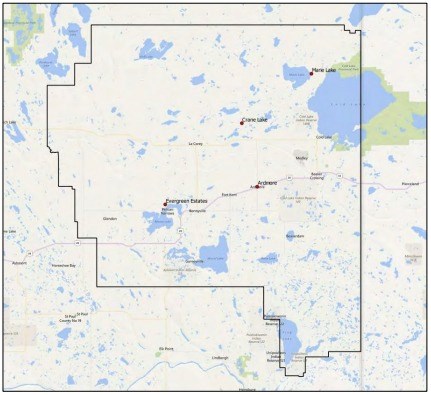BONNYVILLE - The MD of Bonnyville Council put its unanimous support behind a pitch to support a grant application for the hiring of a FireSmart coordinator to lead in prevention and education through the municipality’s Wildfire Mitigation Strategy (WMS) following a presentation by the MD director of public services Feb. 13.
Luis Gandolfi said the initial phases of the strategy focused on removing vegetation from several high-risk areas on MD land including the areas of Marie Lake, Crane Lake and Evergreen Estates. Two remaining communities identified in the strategy - Ardmore and Pelican Narrows - are areas of concern but have little to no public land which Gandolfi explained makes it necessary to adjust the focus to prevention and education of landowners in the municipality.
The WMS was developed with funding assistance from the provincial FireSmart grant program. Gandolfi informed council that this program also offers funding support for non-vegetation initiatives. He asked for council’s approval to move forward with an application to the revenue stream for $200,000 to support a two-year term FireSmart coordinator position in the MD, working under the umbrella of the Bonnyville Regional Fire Authority (BRFA).
However, Gandolfi said applying for this non-vegetation grant would prevent the MD from applying for money through the vegetation portion of the grant this year.
The MD is unable to apply for grant funding to address problem areas on private land to mitigate fire risk.
“We have to educate the landowners and attempt to get them to look at mitigation strategies on their own, so that’s sort of the intent now,” he said of next steps for phases 4 and 5 of the initiative, adding much of what has been isolated as problem areas is on private land. “We simply don’t have any public land to remove vegetation from according to the Wildfire Mitigation Strategy.”
“Last year, we saw some pretty close calls for residents,” Ward 6 Coun. Ben Fadeyiw said. “Are you guys going to be collaborating with different communities like Saskatchewan and First Nations, because we had a big fire on the Cold Lake First Nations that was moving east quite rapidly towards our residents. Is there going to be some sort of collaboration or anything along those lines with this position?”
Gandolfi said bringing adjacent partners to the table with an eye on prevention and education would be part of the role of the coordinator position. However, the coordination on mutual aid agreements between neighbouring fire departments and local authorities would remain with Gandolfi, as director of emergency management, and the fire chief for those partnerships.
“This is about enhancing what we already have. . . A lot of the heavy lifting in terms of the vegetation control has already been done, so we are really getting into the education part,” he said, adding, “If we can secure this position through the grant process it’s a win-win for us and the BFRA.”
The WMS was developed for the MD in early 2020 as part of a FRIAA FireSmart project grant to provide a proactive approach to reduce impacts of a potential wildfire. Four high-hazard communities in the MD were identified: Ardmore, Crane Lake, Evergreen Estates, Marie Lake, along with the Summer Village of Pelican Narrows due to the high hazard rating and concern from emergency response services.



